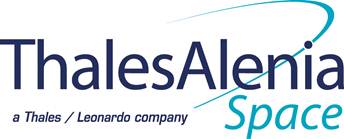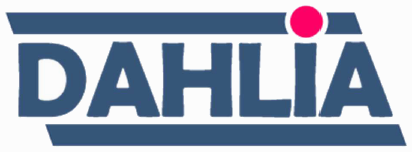The objective of the meeting was for the consortium to share a common view of the project organization. It was also an opportunity to meet the H2020 project officer. At the end of the meeting all the consortium members confirmed their strong willingness to work together on this ambitious project.
Monthly Archives: April 2017
NanoXplore

NanoXplore is a French fabless company with long standing experience in designing high density FPGA core. The company has developed an ultra-dense patented FPGA architecture. Based on this unique architecture, NanoXplore offers the most advanced hard block eFPGA IP offering down to 28nm. NanoXplore is also developing a family of rad-hard FPGA in 65nm. NanoXplore also provides the full software programming environment to use its FPGA.
ISD

ISD is an independent organization established in Greece in 1998. ISD is active in the domain of Integrated Systems (IS) of guaranteed quality and performance. It is an R&D organization working with system houses, software houses and integrated circuit manufacturers. ISD acts as an original electronic equipment developer and integrator, providing software development for embedded and general purpose platforms, to digital and analogue/RF integrated circuit design, memory design, digital signal processing for embedded/stand-alone applications and PCB design.
Thales Alenia Space

Thales Alenia Space, a joint venture between Thales (67%) and Leonardo (33%), is a key European player in space telecommunications, navigation, Earth observation, exploration and orbital infrastructures. Thales Alenia Space and Telespazio form the two parent companies' “Space Alliance”, which offers a complete range of services and solutions. Because of its unrivaled expertise in dual (civil/military) missions, constellations, flexible payloads, altimetry, meteorology and high-resolution optical and radar instruments, Thales Alenia Space is the natural partner to countries that want to expand their space program. The company posted consolidated revenues of 2.4 billion euros in 2016, and has 7,980 employees in nine countries.
Airbus Defence and Space
 Airbus Defence and Space GmbH and Airbus DS SAS are belonging to the Airbus Group.
Airbus Defence and Space GmbH and Airbus DS SAS are belonging to the Airbus Group.
Airbus Group is a global pioneer in aeronautics, space and defence-related services, creating cutting-edge technology (138,622 employees).
Airbus Defence and Space is Europe’s No. 1 defence and space company, with revenues of approximately €14 billion per year. Airbus Defence and Space brings together a wide portfolio to continue to meet the complex needs of its customers, contribute to nations’ defence and security, and secure Europe’s sovereign and independent access to space.
Airbus Defence and Space is well placed to play a leading role in the markets for future unmanned aerial systems (UAS), as well as combat, transport and intelligence, surveillance and reconnaissance aircraft (ISR). Some of the products armed forces can rely on are the swing-role combat aircraft Eurofighter Typhoon, the multi-role military airlifter A400M and the multi-role transport and tanker aircraft A330 MRTT.
With its unique expertise in commercial launchers, satellites and orbital systems, Airbus Defence and Space also serves institutional customers like the European Space Agency (ESA), national civil and defence agencies, and commercial customers. Its portfolio contains the high-power, dual-launch Ariane 5 launcher and major contributions to the International Space Station (ISS) such as the Columbus laboratory.
The Division also develops Earth observation, navigation and science satellites, and communications satellites for telephone, television and internet services. In 2014, Airbus Defence and Space took part of one of the biggest milestones of the decade, when Rosetta's probe, Philae, landed for the first time in history, on the surface of a comet, after ten years of journey.
In the domain of satellite and terrestrial communication systems, intelligence and security, Airbus Defence and Space offers innovative and modular solutions to best serve governments, defence institutions, security and public safety agencies, oil and gas organisations, and commercial customers.
The Division also provides high-performance equipment for defense and security markets, including radars and Identification Friend or Foe (IFF) systems, electronic warfare sensors and systems, avionics, space platform and payload electronics, and optronics.
The DAHLIA project is involving teams from the Space System business line of Airbus Defence and Space, and more precisely from the Space Equipment organization.
Airbus Defence and Space Space Equipment is present in 5 countries and on 8 sites, it is having in 2015 a headcount of 1,300 employees.
The organisation has a long history of successful development of space equipment and System-On-Chip components. It covers the fields of Avionics, Power Electronics, Power-Solar Array, Data Handling and Testing.
Involvement in the project
Airbus DS GmbH, through its Digital Engineering department will jointly participate into the SoC Requirements Work Package with Airbus Defence and Space SAS. They will together consolidate the largest stakeholder’s needs for the Space applications of the DAHLIA SoC, including the needs derived from Airbus DS products roadmaps (driven by the markets) and the needs derived from the Software roadmaps. Airbus DS GmbH will participate actively in the SoC Architecture Work Package (WP4), it will lead the WP5 related to the design adjustment of the Airbus contribution to the SoC modules, it will also lead the WP8 related to the integration and the Simulation of the SoC. In addition, Airbus DS GmbH will provide the necessary support to the WP9 (Synthesis, Gate Level Design & layout constraints identification) and in the frame of the WP10 a contribution to the Datasheet. Finally within the WP11, Airbus DS GmbH will participate to the requirement of the evaluations Kits, will develop Software use cases, to validate the fulfilment of the needs for satellite platforms and payload processing and will run them on both the FPGA version of the evaluation kit and its SoC version.
STMicroelectonics
 Created in 1987 with the merger of the Italian company SGS Microelettronica and the French company Thomson Semiconducteurs, STMicroelectronics is an independent worldwide broad-range semiconductor supplier and it is ranked in the top semiconductor companies in the world with a turnover of 6.97 billion USD in 2016. ST has 11 main production sites, 7 Advanced R&D centres and 39 design and application centres, with more than 43000 employees over the world. ST is present in 35 countries with 79 sales offices. From energy management and savings to trust and data security, from healthcare and wellness to smart consumer devices, in the home, car and office, at work and at play, ST is found everywhere microelectronics make a positive and innovative contribution to people's life.
Created in 1987 with the merger of the Italian company SGS Microelettronica and the French company Thomson Semiconducteurs, STMicroelectronics is an independent worldwide broad-range semiconductor supplier and it is ranked in the top semiconductor companies in the world with a turnover of 6.97 billion USD in 2016. ST has 11 main production sites, 7 Advanced R&D centres and 39 design and application centres, with more than 43000 employees over the world. ST is present in 35 countries with 79 sales offices. From energy management and savings to trust and data security, from healthcare and wellness to smart consumer devices, in the home, car and office, at work and at play, ST is found everywhere microelectronics make a positive and innovative contribution to people's life.
The Company has particular strengths in Multimedia, Power, Connectivity and Sensing technologies and its sales are well balanced among the industry‘s major sectors and products : Automotive and Discrete Group (40 %), Analog and MEMS Group (23 %), Microcontrollers and Digital ICs Group (33 %), Imaging Product Division (4 %). ST is among the world leaders in many different fields, including semiconductors for industrial applications, inkjet print heads, MEMS (Micro-Electro-Mechanical Systems) for portable and consumer devices, microcontrollers and smartcard chips, automotive integrated circuits, computer peripherals and wireless.
From the beginning of the modern Space era, ST has been committed to the Space industry obtaining in 1977 the 1st ever delivered European Space Agency qualification certificate for space components supply.

ST has built his know-how as broad range semiconductor supplier with a vertically integrated manufacturer working model, mastering and leading all steps of the components Value Creation Chain: product definition, design, layout, wafer fabrication, wafer probing, assembly, electrical testing, finishing and all the quality assurance steps related to those activities.
This business model has been transposed to the Aerospace components, making ST a vertically integrated broad range Space component supplier, controlling and mastering its own in-house processes to the benefit of the High-Reliability, providing better opportunities for investment growth through reduced uncertainty.
Involvement in the project
STMicroelectronics will give access to the consortium to its naturally immune to latch up 28nm FDSOI technology. The chip will be designed with the complete 28nm FDSOI platform offering outstanding intrinsic radiation robustness.
STM will also implement the last generation of ARM real-time core (Cortex-R52) that will bring a significant performance breakthrough to the next generation of European microprocessors for Space market. The choice of the European ARM technology, the most widely used processing technology in the world for embedded electronics, will offers to DAHLIA users the best possible ecosystem for technical support and software development.
